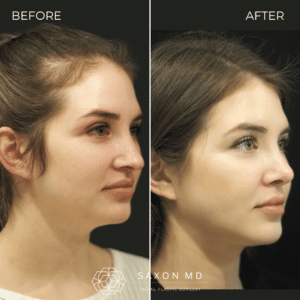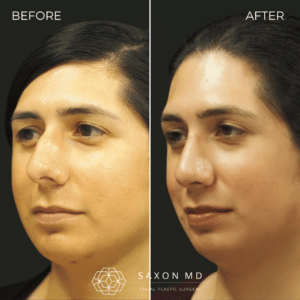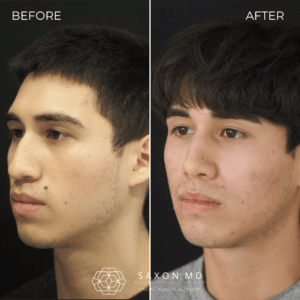Potential Rhinoplasty Complications: What You Need to Know
Rhinoplasty, commonly known as a nose job, is one of the most popular cosmetic surgeries worldwide. While it can deliver life-changing results by improving the appearance and function of the nose, like any surgery, it carries potential risks. Understanding the possible rhinoplasty complications is essential to making an informed decision about the procedure.
This blog will provide a detailed overview of the most common rhinoplasty complications, how they occur, and how they can be addressed. If you’re considering rhinoplasty, knowing the risks involved can help you have more realistic expectations and prepare for a smooth recovery.
Common Rhinoplasty Complications
While rhinoplasty is generally considered a safe procedure, there are several complications that can arise during or after surgery. These rhinoplasty complications can affect both the appearance and functionality of the nose and, in some cases, may require additional surgery to correct.
1. Swelling and Bruising
One of the most common side effects of rhinoplasty is swelling and bruising around the nose and eyes. While this is not considered a serious complication, it can be distressing for patients and may last longer than expected. Swelling can obscure the final result for weeks or even months after the surgery, especially in the nasal tip.
Why It Happens: Rhinoplasty involves manipulating the bone, cartilage, and skin of the nose, which leads to post-operative inflammation. Swelling is part of the body’s natural healing response.
How to Minimize It: Applying cold compresses, keeping the head elevated, and following your surgeon’s post-op instructions can help reduce swelling and bruising. However, it’s important to be patient, as full results may not be visible until the swelling has completely subsided.

2. Infection
Infection is a rare but serious complication that can occur after rhinoplasty. Signs of infection include redness, increased swelling, fever, and discharge from the surgical site.
Why It Happens: Rhinoplasty, like any surgery, introduces incisions into the skin, creating potential entry points for bacteria. If proper hygiene is not maintained, or if post-op care instructions are not followed, infection can develop.
How to Treat It: Most infections can be treated with antibiotics. In severe cases, drainage or revision surgery may be required to address the infection. Preventing infection requires following your surgeon’s instructions regarding wound care and keeping the nose clean during recovery.
3. Difficulty Breathing
While rhinoplasty often improves breathing by correcting structural issues like a deviated septum, some patients may experience difficulty breathing after surgery. This can result from post-surgical swelling, internal scarring, or improper healing of nasal structures.
Why It Happens: If too much cartilage or bone is removed during the surgery, the nasal passages can collapse, making it harder to breathe. Swelling or scar tissue inside the nose can also temporarily block airflow. You may also have proper airflow but lack sensation inside your nose for several months, giving you the sense that you can’t breathe properly. There can be a discrepancy between what is seen on a physical exam after surgery and what you actually feel.
How to Address It: If breathing issues persist beyond the normal recovery period, revision surgery may be required to correct the problem. This can involve grafting cartilage to restore proper nasal structure and function.

4. Nasal Asymmetry
One of the aesthetic risks of rhinoplasty is nasal asymmetry, where the nose appears uneven after surgery. This may happen if the nose heals improperly or if there is an imbalance in the surgeon’s adjustments to the bone or cartilage.
Why It Happens: During rhinoplasty, the surgeon reshapes both the bone and cartilage to achieve the desired outcome. In some cases, the tissues may heal unevenly, or a small discrepancy in the reshaping process may lead to asymmetry.
How to Correct It: In cases of mild asymmetry, a revision procedure may be necessary to fine-tune the results. Patients are advised to wait until the nose has fully healed, usually about 12 months, before considering any additional surgery to correct asymmetry.
5. Scar Tissue Formation
All surgeries involve some degree of scarring, but excessive scar tissue can affect the final results of a rhinoplasty. This is more of a concern with open rhinoplasty, where the incision is made on the external skin.
Why It Happens: Scar tissue forms as part of the body’s healing process. In some cases, internal or external scarring can become more pronounced, leading to visible scars or internal blockages that affect breathing.
How to Manage It: Surgeons often use meticulous suturing techniques to minimize external scarring. For internal scar tissue that affects function, steroid injections or revision surgery may be needed to soften and reduce the scar tissue.
6. Septal Perforation
A septal perforation is a hole in the septum, the wall of cartilage that separates the two nostrils. This is a less common but serious complication that can affect nasal function and lead to symptoms such as nasal congestion, nosebleeds, and whistling sounds during breathing.
Why It Happens: Septal perforation can occur if the septum is accidentally damaged during surgery or if the blood supply to the septum is compromised, leading to tissue death.
How to Treat It: Smaller perforations can sometimes be managed with nasal ointments or silicone splints, but larger perforations may require revision surgery to repair the septum. Septal perforation is often preventable with careful surgical techniques.
7. Altered Sense of Smell
Some patients may experience a temporary or permanent loss of smell after rhinoplasty. While this is usually a short-term side effect, in rare cases, the sense of smell may not fully return.
Why It Happens: The surgery can temporarily impact the olfactory nerves, which are responsible for your sense of smell. Post-operative swelling can also block airflow to the olfactory receptors, reducing your ability to smell.
How to Address It: Most patients regain their sense of smell once the swelling has subsided. If the loss of smell persists, it’s important to consult with your surgeon to rule out other underlying issues.

8. Excessive Bleeding
Some bleeding is normal after rhinoplasty, but in rare cases, patients may experience excessive bleeding during or after surgery. This can be a cause for concern and may require medical intervention.
Why It Happens: Excessive bleeding can occur if a blood vessel is damaged during surgery or if the patient has a blood clotting disorder that was not identified beforehand.
How to Treat It: If excessive bleeding occurs during surgery, it can usually be controlled with cauterization. Post-surgical bleeding should be addressed by your surgeon, and patients may need to undergo a minor procedure to stop the bleeding.
9. Numbness
Numbness around the nose is another common side effect after rhinoplasty. This occurs because small nerves that provide sensation to the skin are cut during surgery. Most patients experience a gradual return of sensation, but in rare cases, numbness may persist long-term.
Why It Happens: Nerves that are cut or damaged during surgery need time to regenerate. In some cases, permanent nerve damage can result in lasting numbness.
How to Treat It: There is no specific treatment for numbness, as it usually resolves on its own over time. Patience is key, but if sensation does not return within a year, consult your surgeon.
10. Cerebrospinal Fluid (CSF) Leak
One of the more severe complications, though rare, is a cerebrospinal fluid (CSF) leak, which can occur if the thin bone separating the nose from the brain (the cribriform plate) is inadvertently breached during surgery.
Why It Happens: If excessive force is applied when manipulating the nasal bones near the base of the skull, it can lead to a breach in the cribriform plate, causing CSF to leak. This can result in symptoms such as a constant clear, watery nasal discharge, headaches, and increased risk of infection, including meningitis.
How to Address It: A CSF leak requires immediate medical attention and possibly surgical intervention to repair the breach. This is a rare complication and can usually be avoided with a highly skilled and experienced surgeon.
11. Saddle Nose Deformity
A saddle nose deformity occurs when the bridge of the nose collapses, creating a concave appearance, often referred to as a “scooped” or “saddled” nose.
Why It Happens: This deformity typically results from over-resection of cartilage or bone during rhinoplasty, particularly in procedures aimed at reducing a dorsal hump. In some cases, trauma to the nose or poor healing can lead to the weakening of the nasal structure.
How to Treat It: Correction of a saddle nose deformity usually requires revision surgery, often involving cartilage grafts (typically harvested from the septum, ear, or rib) to restore the structural integrity of the nasal bridge.
Preventing Rhinoplasty Complications
While some rhinoplasty complications are unavoidable, there are steps you can take to minimize your risk:
- Choose a board-certified facial plastic surgeon with extensive experience in rhinoplasty.
- Follow all pre- and post-operative care instructions provided by your surgeon.
- Be patient with your results. Healing takes time, and swelling may take months to fully subside.
- Communicate openly with your surgeon about your medical history, including any underlying conditions that may affect healing.
Rhinoplasty can be a life-changing procedure, but it’s important to go into it with realistic expectations and a full understanding of the potential risks. By being informed and working closely with an experienced surgeon, like Dr. Sarah Saxon, you can help ensure the best possible outcome for your surgery.